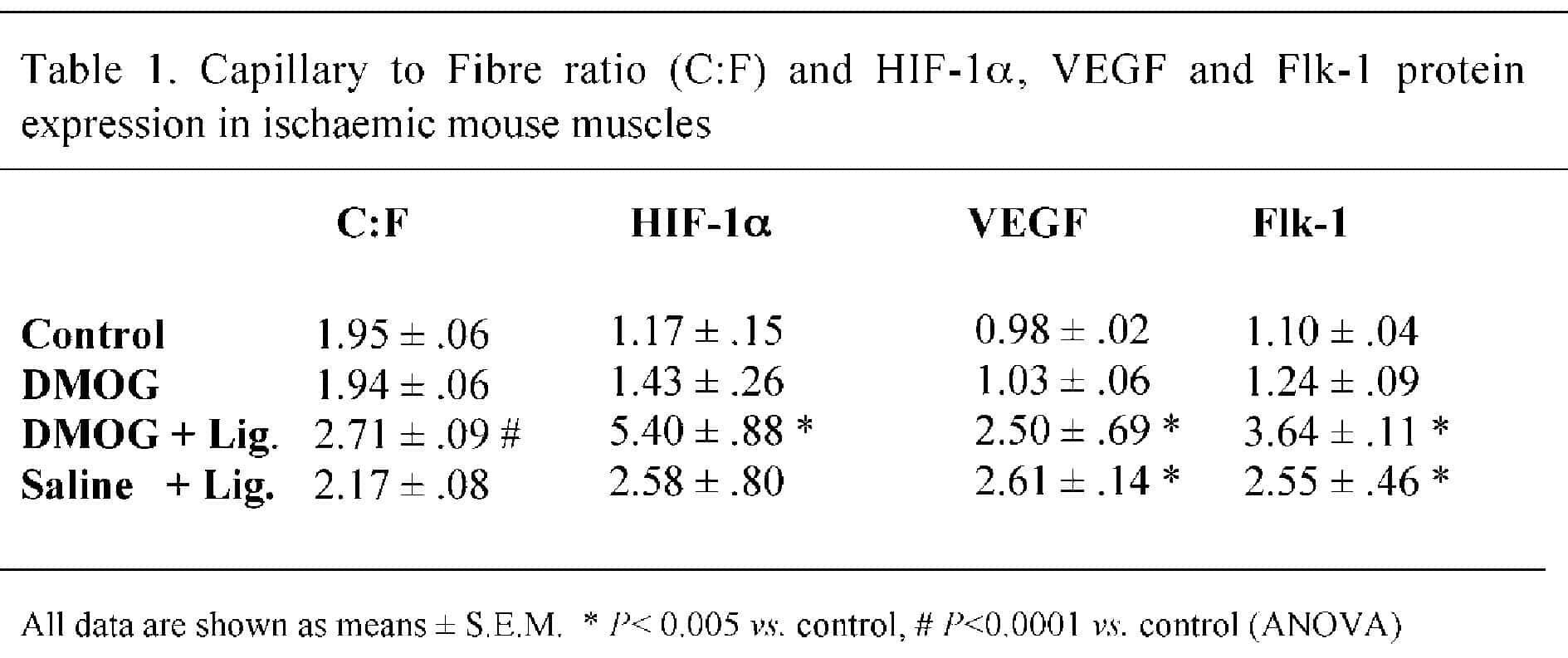Hypoxia-inducible factor (HIF-1α) modulates transcriptional control of several genes involved in vascular growth and cellular metabolism. Polypeptide-induced HIF stabilisation leads to tube formation in co-cultured human microvascular endothelial cells, and local angiogenic response in a murine sponge assay (Willam et al. 2002). We examined the effect of the peptide dimethyloxaloylglycine (DMOG), which interferes with HIF degradation pathway via suppression of propyl hydroxylase activity, on capillary growth in mouse (C57Bl6) ischaemic extensor digitorum longus muscles.
Left femoral artery was ligated under Fluothane inhalation anaesthesia (2 % in O2) in two groups of animals. One group (n = 10) received DMOG I.P. every second day (8 mg in 0.5 ml saline) for 11 days while the other was injected with sterile saline (0.5 ml) at the same intervals (n = 6). Additionally, a third group was treated with DMOG without ligation (n = 4) and four unoperated mice served as controls. Angiogenesis was evaluated by estimation of capillary to fibre ratio (C:F) based on alkaline phosphatase staining. Animals were killed humanely and induction of HIF-dependent genes for vascular endothelial growth factor (VEGF) and its receptor Flk-1 (Elvert et al. 2003) was examined by Western blotting, normalised to actin expression.
DMOG treatment resulted in 39 % increase in C:F ratio in ischaemic muscles (P < 0.0001). Inhibition of HIF degradation led to the significant increase of endogenous HIF protein that was only apparent in tissues where HIF production was induced by ischaemia, but not in ligated and saline-treated or DMOG -treated mice without ligation. Ischaemia induced VEGF protein production to a similar degree, irrespective of DMOG treatment. However, production of Flk-1 was enhanced in ischaemic and DMOG-treated muscles, which may explain an intensive growth of capillaries in those muscles. The findings indicate that treatment with DMOG has a potential therapeutic use in enhancing angiogenesis in ischaemic diseases. Furthermore, it can be applied with low risk of side effects since it acts locally by stabilisation of HIF protein only in hypoxic regions of muscles.

